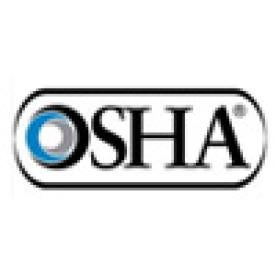On December 4, 2014, OSHA held an Advisory Committee on Construction Safety and Health (“ACCSH”) meeting. ACCSH is an advisory body that provides advice and assistance to OSHA regarding construction standards. There are 15 members of this advisory committee and the committee is comprised of representatives for employers, employees, federal, state and public representatives.
In addition to hearing from Assistant Secretary Dr. Michaels and OSHA’s Director of the Directorate of Construction, Mr. Maddux, ACCSH heard presentations regarding OSHA’s Notice of Proposed Rulemaking for additional quantitative fit test protocols and employer obligations regarding recordkeeping and recording injuries and illnesses.
New Quantitative Fit Testing Protocol
Pursuant to 29 C.F.R. § 1910.134(f) employees are required to be fit tested prior to wearing tight-fitting respirators and the fit test administered must be using an OSHA-accepted fit test protocol.
Under Appendix A, Part II for § 1910.134, interested parties are able to submit an application to OSHA for approval of a new fit test protocol. There are currently four available fit testing protocols: Generated Aerosol Quantitative Fit Testing Protocol, Ambient aerosol condensation nuclei counter (CNC) quantitative fit testing protocol (PortaCount), Controlled negative pressure (CNP) quantitative fit testing protocol and Controlled negative pressure (CNP) REDON quantitative fit testing protocol.
OSHA recently received an application for new fit test protocols from TSI. TSI submitted three fit test protocols: “Fast-Full” method for elastomeric full-facepiece respirators, “Fall-Half” method for elastomeric half-mask respirators and “Fast-FFR” method for filtering facepiece respirators.
According to OSHA, the major differences between the proposed Fast-Full and Fast-Half methods and the OSHA-approved PortaCount protocol are that the Fast-Full includes only 3 of the 7 current test exercises (i.e. bending, head side-to-side, and head up-and-down) plus one new exercised (i.e., jogging-in-place). According to TSI, the Fast-Full method reduces each exercise duration from 60 seconds to 30 seconds, which results in a total test duration of 2.5 minutes rather than 7.2 minutes. Similarly, the Fast-FFR method includes 4 of the current test exercises and reduces total exercise time from 7.2 minutes to 2.5 minutes.
These submitted fit test methods were evaluated using ANSI standards and met the required acceptance criteria for test sensitivity, predictive value of a pass, predictive value of a fail, test specificity and kappa statistic.
According to OSHA, TSI’s application meets the criteria established pursuant to § 1910.134 Appendix A, Part II and therefore OSHA must initiate a rulemaking to determine whether such new protocols should be added to the accepted fit test protocols. OSHA requested that ACCSH recommend proceeding with the Notice of Proposed Rulemaking (NPRM). ACCSH voted and recommended that OSHA proceed with a Notice of Proposed Rulemaking. OSHA anticipates that a NPRM will be published in the Federal Register in March 2015.
Injury and Illness Recording Obligations
OSHA also sought a recommendation from ACCSH to issue a proposed rule amending the recordkeeping regulations to clarify that an employer’s duty to make and maintain accurate records of work-related injuries and illnesses is an on-going obligation during the five-year retention period.
This agency action is in response to the decision of the United States Court of Appeals for the District of Columbia Circuit in AKM LLC v. Secretary of Labor (AKM), 675 F.3d 752 (D.C. Cir. 2012). In AKM, OSHA argued that a failure to record an injury or illness is a continuing violation that exists for the duration of the five year retention period. Relying on the six-month statute of limitations for the issuance of citations, the Circuit Court rejected the Secretary’s argument holding that “ [n]othing in the statute suggests Congress sought to endow this bureaucracy with the power to hold a discrete record-making violation over employers for years, and then cite the employer long after the opportunity to actually improve the workplace has passed.”
Since the decision was issued in AKM, OSHA has only been permitted to cite employers for the failure to record an injury or illness within six months of the day the employer failed to make the initial record. OSHA is now trying to rewrite the Court’s decision in an effort to be able to cite employers up to five years later (relying on the five year retention period).
OSHA presented to ACCSH new amendments to the recordkeeping requirements that the agency alleges would provide no new compliance obligations but would allow OSHA to cite up to five years beyond when an employer fails to make the initial record of a work-related injury or illness. OSHA requested that ACCSH recommend the agency move forward with issuing a NPRM to amend the recordkeeping regulations.
After a cordial but polarizing discussion, ACCSH recommended OSHA issue a NPRM amending the recordkeeping regulations. The vote was split with 9 members recommending the issuance of a NPRM and 5 members opposing such action. The next step will be for OSHA to issue a NPRM.
Copies of the ACCSH meeting minutes and transcripts from the meeting can be found on online at OSHA’s website.




 i
i

